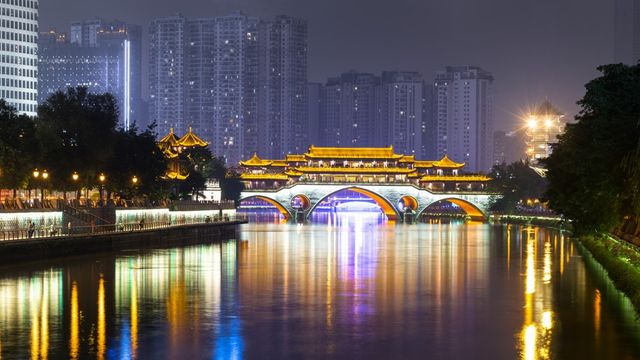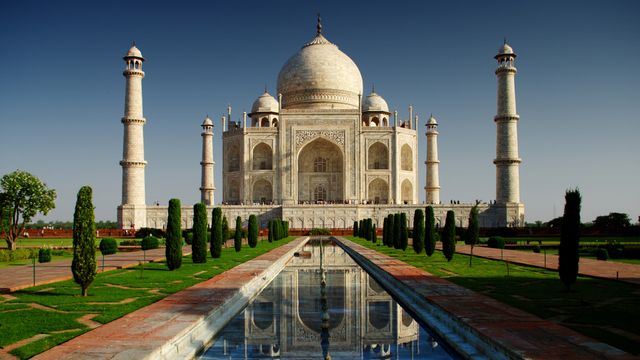4.3.1
Global Shift for Developing Nations
Global Shift
Global Shift
Global shift is the movement of manufacturing and the outsourcing of services from the West to the East. It can be considered the movement of the global economic centre of gravity. The main driver has been labour costs.


Global shift of manufacturing to China
Global shift of manufacturing to China
- With a population of over 1.3 billion people, China has become the ‘workshop of the world’ as TNCs have moved their manufacturing here.
- TNCs can keep their costs very low as wages are cheap in China.
- This has increased China’s GDP because their exports have increased significantly. Between 1978-2012 China’s economy grew at an average rate of 9.4% per year.


Global shift - possibilities for China
Global shift - possibilities for China
- It is possible that China will become the largest economy in the world because of this growth.
- This shift has caused urbanisation as workers move from agriculture to higher-paying jobs in cities.


Global shift of services to India
Global shift of services to India
- With a large educated and English-speaking population, India has seen a growth in services because many TNCs outsource their call centres and other services here.
- E.g. In 2003, BT opened two call centres in India (one in Bangalore, one in Delhi). They employed 2,200 people. BT benefit from lower labour costs because wages are cheaper in India.
- India has benefitted significantly from the global shift in services.
- The outsourcing industry in India adds an estimated $150 billion to the economy.
Effects of Global Shift
Effects of Global Shift
As a result of the global shift, there have been negative impacts on both people and the environment.


People in developing world
People in developing world
- There has been a material shift in jobs to the developing world.
- Rather than working in agriculture, people in countries like India, China and Bangladesh can add more value and earn higher wages than they would otherwise.


Land use in developing world
Land use in developing world
- In the developing world, the global shift has caused the loss of productive land.
- It was predicted in 2014 that 40% of China’s farmland was degraded because of pollution and increased building.
- This means that fertile land that could have been used for farming is instead used for manufacturing or the quality of the land has reduced because of pollution.


Land use in developing world cont.
Land use in developing world cont.
- In the developing world, the global shift has caused the growth of unplanned settlements.
- As more people move to cities to take the jobs in manufacturing, squatter settlements or slums grow. These unplanned settlements often have a low quality of life and cause problems for the government of that area.
,h_400,q_80,w_640.jpg)
,h_400,q_80,w_640.jpg)
Pollution in developing world
Pollution in developing world
- In the developing world, global shift has caused environmental and resource pressure.
- Resources are needed to power factories and manufacturing plants. These factories also produce pollution that damages the environment.


Pollution in China
Pollution in China
- In 2013, China experienced severe air pollution problems with residents of Beijing advised to stay indoors. The air pollution levels were over 20x higher than the World Health Organisation recommended maximum levels for a 24-hour period.
- China also has serious water pollution problems. In 2015, 85% of the water in Shanghai's major rivers was undrinkable.
1Tectonic Processes & Hazards
1.1Tectonic Processes & Hazards
1.2Natural Disasters
1.3Natural Disaster Case Studies
1.4Trends & Patterns
2Option 2A: Glaciated Landscapes & Change
2.1Glaciated Landscapes Over Time
2.2Periglacial Landscapes
2.3Glacial Processes
2.4Glacial Landforms
3Option 2B: Coastal Landscapes & Change
3.1Coastal Landscapes
3.2Coastal Erosion & Deposition
3.3Coastal Risks
4Globalisation
4.1Globalisation
4.2Negatives of Globalisation
4.3Global Shift
4.5Culture
4.6Measuring Development
5Option 4A: Regenerating Places
5.1Types of Economies
5.2Function of Places
5.3Regeneration
5.4Regeneration Case Studies
6Option 4B: Diverse Places
6.1Population Structure
6.2Past & Present Connections
6.3Urban & Rural Spaces
6.4Diversity
6.5Urban & Rural Case Studies
6.6Case Study - Tower Hamlets
6.7Case Study - Sturton-le-Steeple
7The Water Cycle & Water Insecurity (A2 only)
7.1Hydrological Processes Global to Local
7.2Influences on the Water Cycle
7.3Water Insecurity
8The Carbon Cycle & Energy Security (A2 only)
8.1The Carbon Cycle
8.2Energy Consumption
8.3Alternative Energy
8.4Growing Demand for Resources
9Superpowers (A2 only)
9.1Superpowers
9.2Hard & Soft Power
9.2.1Hard & Soft Power
9.2.2Emerging Powers - China Rivalry
9.2.3Emerging Powers - Chinese Sources of Power
9.2.4Emerging Powers - Brazil
9.2.5Emerging Powers - Russia
9.2.6Emerging Powers - India
9.2.7Theories of Development
9.2.8Power Case Studies: Chinese One Belt One Road
9.2.9Power Case Studies: Pakistan Nuclear Arms
9.2.10Power Case Studies: OPEC
9.3IGOs, TNCs & Alliances
10Option 8A: Health & Human Rights (A2 only)
10.1Human Development
10.2Role of Governments & IGOs
10.3Human Rights
10.4Interventions
11Option 8B: Migration & Identity (A2 only)
11.1Globalisation & Migration
11.2Consequences of Migration
11.3Nation States
11.4Responses to Global Migration
Jump to other topics
1Tectonic Processes & Hazards
1.1Tectonic Processes & Hazards
1.2Natural Disasters
1.3Natural Disaster Case Studies
1.4Trends & Patterns
2Option 2A: Glaciated Landscapes & Change
2.1Glaciated Landscapes Over Time
2.2Periglacial Landscapes
2.3Glacial Processes
2.4Glacial Landforms
3Option 2B: Coastal Landscapes & Change
3.1Coastal Landscapes
3.2Coastal Erosion & Deposition
3.3Coastal Risks
4Globalisation
4.1Globalisation
4.2Negatives of Globalisation
4.3Global Shift
4.5Culture
4.6Measuring Development
5Option 4A: Regenerating Places
5.1Types of Economies
5.2Function of Places
5.3Regeneration
5.4Regeneration Case Studies
6Option 4B: Diverse Places
6.1Population Structure
6.2Past & Present Connections
6.3Urban & Rural Spaces
6.4Diversity
6.5Urban & Rural Case Studies
6.6Case Study - Tower Hamlets
6.7Case Study - Sturton-le-Steeple
7The Water Cycle & Water Insecurity (A2 only)
7.1Hydrological Processes Global to Local
7.2Influences on the Water Cycle
7.3Water Insecurity
8The Carbon Cycle & Energy Security (A2 only)
8.1The Carbon Cycle
8.2Energy Consumption
8.3Alternative Energy
8.4Growing Demand for Resources
9Superpowers (A2 only)
9.1Superpowers
9.2Hard & Soft Power
9.2.1Hard & Soft Power
9.2.2Emerging Powers - China Rivalry
9.2.3Emerging Powers - Chinese Sources of Power
9.2.4Emerging Powers - Brazil
9.2.5Emerging Powers - Russia
9.2.6Emerging Powers - India
9.2.7Theories of Development
9.2.8Power Case Studies: Chinese One Belt One Road
9.2.9Power Case Studies: Pakistan Nuclear Arms
9.2.10Power Case Studies: OPEC
9.3IGOs, TNCs & Alliances
10Option 8A: Health & Human Rights (A2 only)
10.1Human Development
10.2Role of Governments & IGOs
10.3Human Rights
10.4Interventions
11Option 8B: Migration & Identity (A2 only)
11.1Globalisation & Migration
11.2Consequences of Migration
11.3Nation States
11.4Responses to Global Migration
Unlock your full potential with Seneca Premium
Unlimited access to 10,000+ open-ended exam questions
Mini-mock exams based on your study history
Unlock 800+ premium courses & e-books